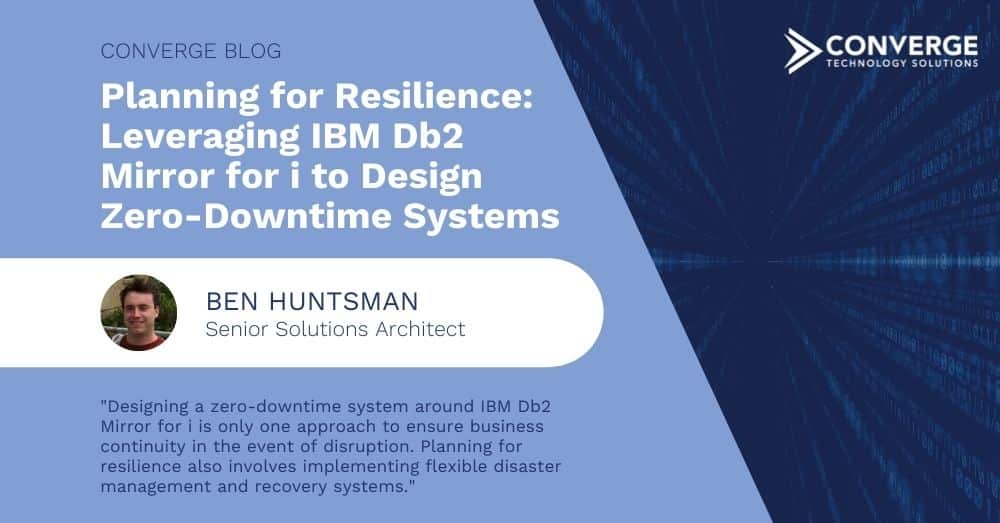For large organizations, even small amounts of downtime can be costly. A 2019 survey from IBM and Forrester Consulting found that planned downtime cost organizations $1.5 million on average in just one quarter and $5.6 million in total the previous year. The financial impact of unplanned downtime was even greater, costing on average 35% more per minute than planned downtime.
Unfortunately, between planned maintenance and unplanned outages, downtime seems almost inevitable. But designing zero-downtime systems can help you keep your business’s critical applications up and running virtually at all times. A system designed around IBM Db2 Mirror for i, available with the newer versions of the IBMi operating system, offers one solution for continuous availability.
Downtime Risk Factors
Downtime can result from an issue with your architecture components, or it can be a necessary part of maintenance. Your organization may also face significant downtime in the wake of a data breach or ransomware attack — even after you’ve paid the ransom.
According to IBM research, it takes an average of 280 days to identify and contain a data breach. If your applications are offline for even a fraction of that time, your business could suffer serious financial losses. A resilient system ensures that your applications and services remain online to prevent data loss and continue serving users.
Continuous Availability via IBM Db2 Mirror for i
IBM Db2 Mirror for i enables continuous availability by creating a cluster of two mirrored systems instantly. This setup makes your organization’s underlying Db2 database available from either system so that it’s accessible even when one instance becomes unavailable. This redundancy ensures that applications stay online through disruptions.
Recovery Time Objective
Recovery time objectives (RTO) measure the amount of time an application can be offline without causing significant losses and includes the time it takes to recover after an outage. IBM DB2 Mirror for i provides an RTO of zero.
In practice, this means that your application’s front end will not be disrupted when one of the mirrored databases becomes unavailable. Therefore, users of your application will be able to continue running it normally, experiencing no interruptions.
Rolling Updates
When you have to perform planned maintenance that requires downtime, Db2 Mirror for i enables you to continue running mission-critical applications while one of the mirrored databases is offline.
To perform a rolling update, you will first suspend the node you wish to update. The second node should then be designated to track the changes that occur while the first node updates. This will track some events, such as user profile changes, that can still occur.
When the first node has finished, the roles will swap and the update should be repeated on the second node. Finally, resuming mirroring will resynchronize your system.
Downtime Prevention for Business Continuity
Designing a zero-downtime system around IBM Db2 Mirror for i is only one approach to ensure business continuity in the event of disruption. Planning for resilience also involves implementing flexible disaster management and recovery systems.
This begins with regular backups and storage snapshots to separate data while maintaining easily accessible locations. It’s also important that your organization can restore quickly from those backups.
Automation is another key part of resilience. By automating backups, disaster response activities, and recovery efforts, you can ensure that your mission-critical systems respond as quickly as possible to emergency situations.
Reach out to Converge Technology Solutions to find out more about planning for resilience and how IBM Db2 Mirror for i can help.




